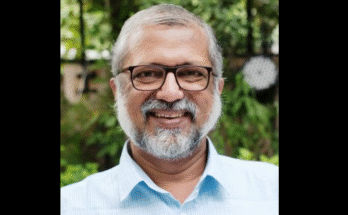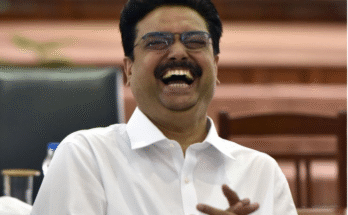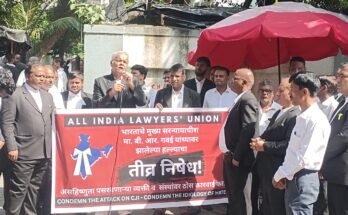Dignity of weaker sex and weaker strata defines the prosperity of a state. All in vain if the last (wo)man of a society is robbed of her/his fundamental rights. Rammohan Roy was the first who fought for it. Rabindranath Tagore conferred him with ‘Raja’ and said, “Raja Rammohan Roy inaugurated the modern age in India. He was the father of the Indian Renaissance and the prophet of Indian nationalism.”
He was born in a Bengali Brahman family on 22nd Day of May 1772; educated in Persian, Arabic, and Sanskrit; and self-educated in English through business connections to British civil servants and employment in the East India Company besides dozens of other languages like French, Latin, Greek and Hebrew (see A Concise History of Modern India by Barbara D. Metcalf and Thomas R. Metcalf 2nd Edition/History of Modern India by Bipan Chandra). He may be termed as father of Indian Journalism (For inter alia The Brahmanical Magazine).
According to Bipan Chandra, “He brought out journals in Bengali, Persian, Hindi and English to spread scientific, literary and political knowledge amongst the people, to educate public opinion on topics of current interest, and to represent popular demands and grievances before the government.”
In my last article on this platform I argued that until the freedom struggle commenced, history suggests that the Indians seemed to be a puppet that danced to the communal agenda of the priestly class. For example, for abolition of sati pratha by Raja Rammohan Roy (a heinous malpractice where widows were burnt alive on the pyre of her deceased husband) Hindus and Muslim rulers failed miserably and even market had its hand fastened as ‘the British Government that of laissez faire declined to interfere with it for fear of wounding the religious susceptibilities of the people, which might lead to trouble.’ Ironically the so-called English observers in the eighteenth century valorized sati as a heroic act of romantic self-sacrifice.
The moral weakness of the Indian men who backed sati testified to those who lacked the masculine strength to nurture and uplift rather than to degrade their women. And so to the consequent father of modern Indian Renaissance Raja Rammohan Roy came to rescue them. Women in India must be grateful to him. To bring about this herculean task, he had to translate all the Indian scriptures from Sanskrit to cross language to show and convince the Indians and English administrators that Sati Pratha is not at all mandated by the main source of ancient Vedic cultures. Thanks goes to Lord Bentinck who not only became satisfied but also acted on it and abolished the heinous inhumane crime and made the same culpable homicide liable even to the abettor of the same.
The Charter Act of 1833 assailed slavery in India and the same was abolished in 1843. Are we thankful enough to Lord Macaulay who made keeping or trafficking in slaves crimes punishable under the Indian Penal Code of 1860 (Now getting repealed w.e.f. 01.07.2024 and replaced by a new act Bhartiya Nyay Sanhita, 2023). A. B. Keith in his book, A Constitutional History of India (1600-1935) says, “While the abolition of slavery raised no serious difficulties of principle, the case was very different with the practice of the burning with a dead husband of his widow or widows” i.e. abolition of Sati pratha was not an easy task to get accomplished. Administrator like Warren Hastings, Governor-General of the Presidency of Fort William, was, in the strongest sense, reluctant or not prepared to interfere with this heinous rite sanctioned and sponsored of course by some Hindu authority, and the credit goes to the Supreme Court of Judicature at Fort William in Calcutta. Charles Cornwallis and John Shore unfortunately failed to take the opportunity to discourage it officially. Richard Wellesley unfortunately left India before he could have acted upon a report of the Sadr Nizamat Adalat (an Appellate Court for Criminal matters established by Warren Hastings) which suggested its abolition in some districts and limitation in others.
Ironically, A. B. Keith further says, “This advice was not acted on; instead in 1812-17 a foolish policy was adopted which appeared to give official sanction to the rite if it was in accordance with the religious law.” William Bentinck when he ascended to the Governor-General of the Presidency of Fort William made the practice of sati or suttee illegal in all jurisdictions of British India and made it subject to legal prosecution vide The Bengal Sati Regulation or Regulation XVII, A. D. 1829 of the Bengal Code dated 4th Day of December 1829. The blaze of protest against abrogation was signed even in the Bombay and Madras presidency. This ban not only abolished the heinous crime but also gave legal status to Indian women like that of education and inheritance of property.
Unfortunately the opposition was reluctant to imbibe it and it came from some conservative Hindus led by Radhakanta Deb (King of Shovabazar Raj who was albeit a scholar and staunch supporter of English education and a leader of the Calcutta conservative Hindu society), and the Dharma Sabha formed by him who saw the ban as an interference in Hindu religious affairs and violation of George III’s Statute 37 (by which the crown assured Hindus of Indian subcontinent that the British Raj shall not interfere with their religion in whatsoever manner). He tried the decision to abolish sati pratha get assailed in the Privy Council, but in vain as the abrogation was upheld with majority as four of the seven privy councilors supporting the annulment. All thanks to Raja Rammohan Roy who took the strongest championed initiatives for the same.
He not only paved the way for abolition but also agitated the people against it. His mode of agitation was adopted by Mahatma Gandhi later on. He pursued Company (The East India Company) to decisively answer the challenge thwarted in the privy council and also to get it dismissed. No ill effects followed by the abolition of Sati Pratha as misnomer spread by the pseudo Dharm Sabha of Radhakanta Deb who himself was a grandson of adopted son of Shovabazar Raj of Bengal (now situated at Kolkata where Asia’s largest brothel is in operation). A. B. Keith says, “It seems clear that it was unwise so long to acquiesce in a stupid barbarity.” (E. Thompson, Suttee; Peggs, India’s Cries to British Humanity (1832); Reg. XVII of 1829. The rite still excites admiration in Bengal.)
It was Roy who supported English education in India to enlighten the people that sati pratha is wrong and no evil shall be caused to them if abolished and subsequently made a terra firma for Macaulay’s education policy. According to the former, embracing mathematics, natural philosophy, chemistry and anatomy, with other useful sciences are indispensable to accept the rational and scientific approach and the doctrine of human dignity as well as social equity.
He even possessed great love and respect for the traditional philosophic systems of the East and invited good in other religions to Hinduism; his translations of Upnishads are par excellence. He may be called synchronizer of East and West as he was against the caste culture rampant in every part of India in those times and prevalence of meaningless rituals. For him humanity is the doctrine based upon which poetic justice is delivered. He was unhesitant to postulate to departing from the dictum of holy books and inherited traditions if necessary lest humanity suffers and by doing this one shall not be alleged apostate. He was against aping and urged everyone to be critical and take informed decisions based upon reasons of good faith. Any suppression comes from non reformist rigidity and he had reasons to believe that conversion in Hinduism is due to repulsive rituals therefore he advocated for reforms in Hinduism.
But Rammohan Roy was an unfortunate child who was accused of being heretic and outcaste by many including his mother. He paid this price for awakening the Hindus. He paid this price for empowering women to her rights and inheritance. He paid this price to rebel against the established social evils of Hinduism. He paid this price to plead for the modern education. He paid this price to outcaste the casteism. He paid this price to feel people proud that one “belongs to a religion which has taught the world both tolerance and universal acceptance.” He paid this price to accept all religions as true. He paid this price to fight against sectarianism, bigotry, and its horrible descendant, fanaticism. He paid this price to touch all aspects of nation-building. He paid this price to stop polygamy. He paid this price to give assistance to David Hare in implementing modern education in India and helped the later laying the foundation stones of Hindu College. He paid this price to pursue the British government for revenue reforms and giving tenants their rights. He paid this price for his unselfish work towards India, more particularly Hinduism. And, this pain gave birth to the Brahmo Samaj, to purify Hinduism and preach monotheism in Vedas.
In his gratitude letter to Lord Bentinck, he writes, “With hearts filled with the deepest gratitude… your humane and successful exertions in rescuing us for ever, from the gross stigma hitherto attached to our character as willful murderers of females, and zealous promoters of the practice of suicide. This system of female destruction … (was) in defiance of the … direct commandment of Munoo, the first and greatest of all the legislators, conveyed in the following words: ‘Let a widow continue till death forgiving all injuries performing austere duties, avoiding every sensual pleasure’.” “In other words, even the most anti-imperialist amongst us has felt forced to acknowledge the ‘positive’ consequences of colonial rule for certain aspects of women’s lives, if not in terms of actual practice, at least at the level of ideas about ‘women’s rights’.” (Contentious Traditions: The Debate on Sati in Colonial India by Lata Mani appeared in Recasting Women: Essays in Colonial History Ed. By Kumkum Sangari and Sudesh Vaid)
It is a lesser known fact that he roused the Bengali sentiments amongst the Bengalis and wanted every Bengalis to communicate in Bangla for which he compiled Bangla Grammar and gave birth to Bengali Prose. According to Bipan Chandra, “Rammohan represented the first glimmerings of the rise of national consciousness in India. The vision of an independent and resurgent India guided his thoughts and actions. He believed that by trying to weed out corrupt elements from Indian religions and society and by preaching the Vedantic message of worshipping of one God, he was laying the foundations for the unity of Indian society which was divided into divergent groups. In particular he opposed the rigidities of the caste system which, he declared, ‘has been source of want of unity among us’. He believed that the caste system was doubly evil: it created inequality and it divided people and ‘deprived them of patriotic feeling’. Thus, according to him, one of the aims of religious reform was political uplift.’ On the front of revenue reforms “he demanded that the maximum rents paid by the actual cultivators of land should be permanently fixed so that they too would enjoy the benefits of the Permanent Settlement of 1793.” (See Bipan Chandra/ Essential writings of Raja Rammohan Ray Edited by Bruce Carlisle Robertson).
It is said that once Alexander told, in the end, when it is over, all that matters is what you have done. Raja Rammohan Roy was a lion who roared against the sorrow and despair especially for ‘the weaker sex’ as staunch champion. For him, “Social, economic and political justice; liberty of thought, expression, belief, faith, and worship; equality of status and of opportunity; and to promote among them all fraternity assuring the dignity of the individual and the unity and integrity of the Nation;” was the fundamental rights of each and every individual as well as the directive policy of the states. For him, an individual’s own cause could be sacrificed for the betterment of the society. Being monotheist based upon the Vedas and Upanishads, he mandated that to know the supreme knowledge of the God, reciting Veda is not compulsory.
Saumyendranath Tagore writes, “Jawaharlal Nehru said: “He (Raja Rammohan Roy) was more than a scholar and investigator; he was a reformer above all.” According to Bipin Chandra Pal (To make it clear that Bipin Chandra Pal was a freedom fighter and one of the Lal-Bal-Pal triumvirate), “the chief value of Raja’s labours, to our mind, seems to lie in his fight against the forces of medievalism in India, and it is for this reason that we claim for him the honour of being the Father of the present Indian Renaissance”.” Swami Vivekananda opined that Raja Rammohan Roy’s acceptance of the Vedanta, his preaching of patriotism, and the love that embraced the other religions equally with the Hindu shall be remembered graciously. He must be remembered for freeing India from a fatal incubus of social, religious, historical and economic abstractions especially at the time when military rules was therein. His grace is not indentured to the finite territory of West Bengal only as its wings are stretched from Kashmir to Kanyakumari and Bay of Bengal to Arabian Sea.




